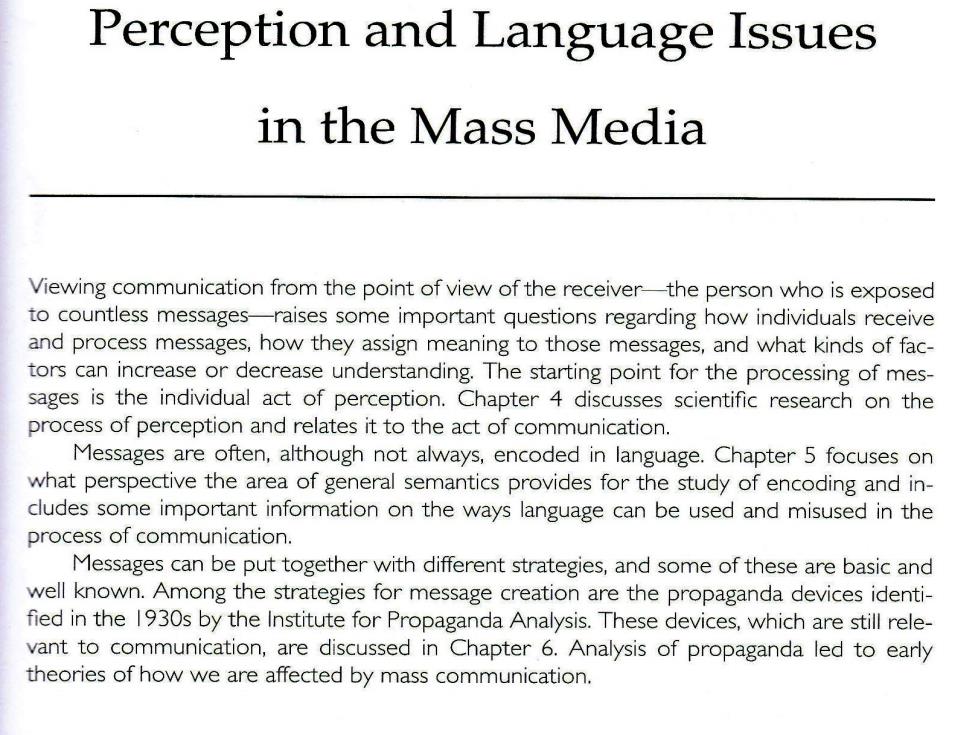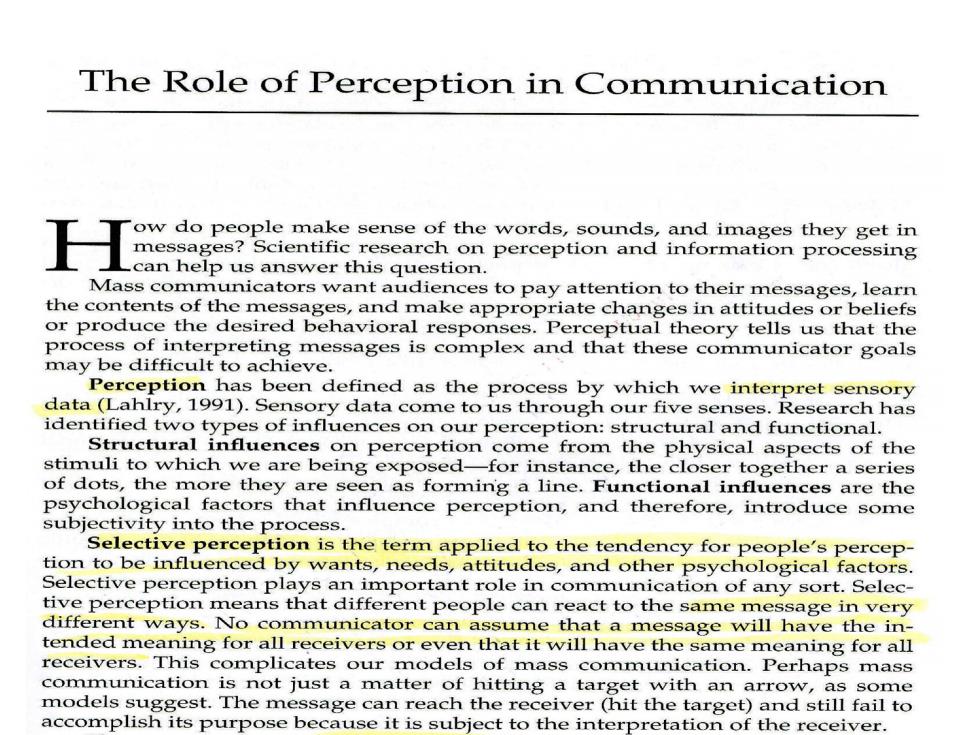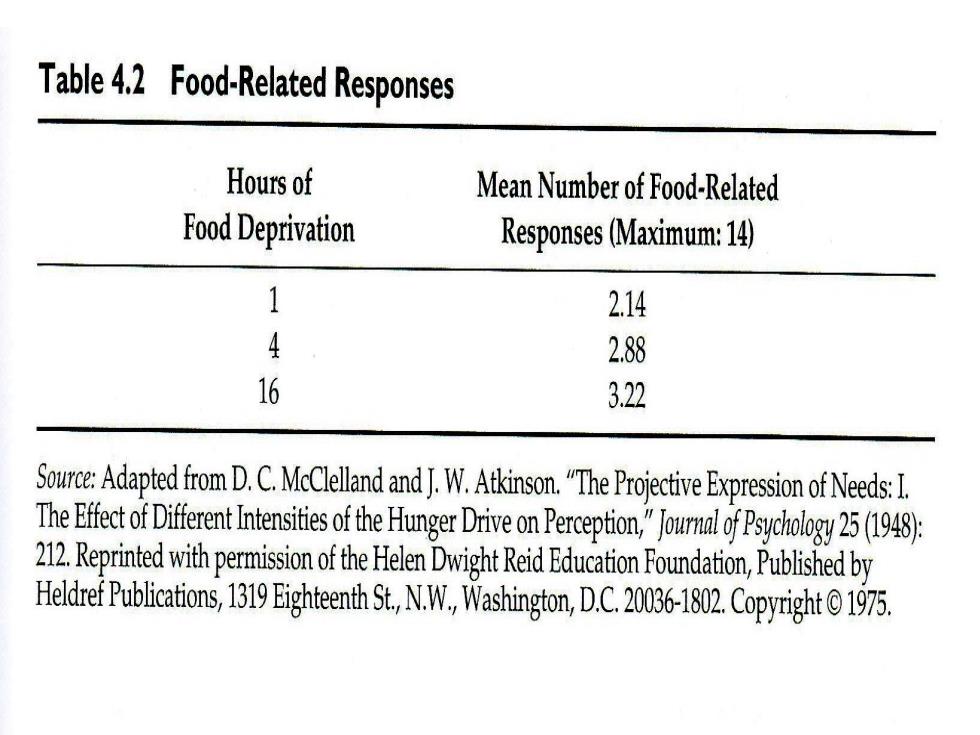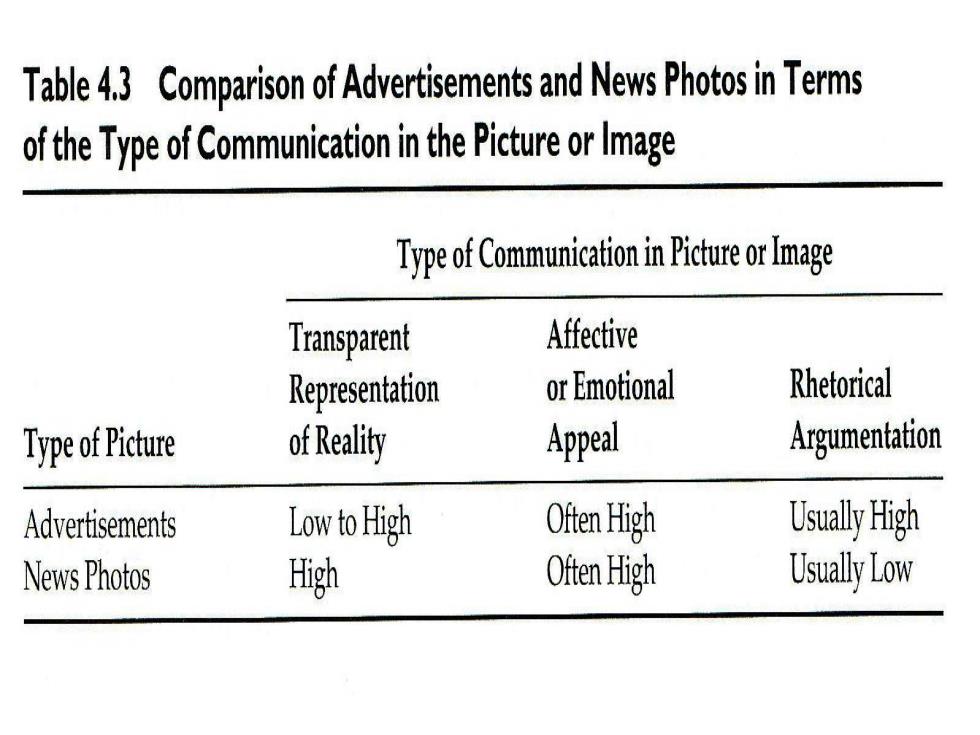
Perception and Language Issues in the Mass Media Viewing communication from the point of view of the receiver-the person who is exposed to countless messages-raises some important questions regarding how individuals receive and process messages,how they assign meaning to those messages,and what kinds of fac- tors can increase or decrease understanding.The starting point for the processing of mes- sages is the individual act of perception.Chapter 4 discusses scientific research on the process of perception and relates it to the act of communication. Messages are often,although not always,encoded in language.Chapter 5 focuses on what perspective the area of general semantics provides for the study of encoding and in- cludes some important information on the ways language can be used and misused in the process of communication. Messages can be put together with different strategies,and some of these are basic and well known.Among the strategies for message creation are the propaganda devices identi- fied in the 1930s by the Institute for Propaganda Analysis.These devices,which are still rele- vant to communication,are discussed in Chapter 6.Analysis of propaganda led to early theories of how we are affected by mass communication

The Role of Perception in Communication ow do people make sense of the words,sounds,and images they get in messages?Scientific research on perception and information processing Lcan help us answer this question. Mass communicators want audiences to pay attention to their messages,learn the contents of the messages,and make appropriate changes in attitudes or beliefs or produce the desired behavioral responses.Perceptual theory tells us that the process of interpreting messages is complex and that these communicator goals may be difficult to achieve. Perception has been defined as the process by which we interpret sensory data (Lahlry,1991).Sensory data come to us through our five senses.Research has identified two types of influences on our perception:structural and functional. Structural influences on perception come from the physical aspects of the stimuli to which we are being exposed-for instance,the closer together a series of dots,the more they are seen as forming a line.Functional influences are the psychological factors that influence perception,and therefore,introduce some subjectivity into the process. Selective perception is the term applied to the tendency for people's percep- tion to be influenced by wants,needs,attitudes,and other psychological factors. Selective perception plays an important role in communication of any sort.Selec- tive perception means that different people can react to the same message in very different ways.No communicator can assume that a message will have the in- tended meaning for all receivers or even that it will have the same meaning for all receivers.This complicates our models of mass communication.Perhaps mass communication is not just a matter of hitting a target with an arrow,as some models suggest.The message can reach the receiver(hit the target)and still fail to accomplish its purpose because it is subject to the interpretation of the receiver

Table 4.I Perceptual Predominance in Ten Pairs of Pictures for Mexican and American Subjects Trials Where Total Number Trials Where Mexican American Scenes Scenes Dominated Dominated of Trials 16 60 Mexican Males (6) 44 15 60 Mexican Females (6) 45 53 60 American Males(6) 7 12 48 60 American Females (6) Serom JW.BagbyA Cros-cultural Study of Perceptual Predominance in Binocular Rivalry." oom Psycholo54(1957):333.Copyright1957by the Americm Psychological Association.Reprinted by permission

Table 4.2 Food-Related Responses Hours of Mean Number of Food-Related Food Deprivation Responses(Maximum:14) 1 2.14 4 2.8 16 3.22 Source:Adapted from D.C.McClelland and J.W.Atkinson."The Projective Expression of Needs:I The Effect of Different Intenitis of the Hunger Driveon PerceptionfPsc(1948) 212 Reprinted with pemission ofthe Helen Dwight Reid Education Foundation,Published by Heldref Publications,1319EighteentSt N.W.,Washington,D.C.0-8 Copyight1975

Table 4.3 Comparison of Advertisements and News Photos in Terms of the Type of Commnictionin the Picturermage Type of Cotionn Pictre mage Transparent Affective Representation orEmotional Rhetorical Type of Picture of Reaity Appeal Argumentation Advertisements Lowtoig OftenHigh Usually High News Photos Hig助 ftHigh Usually Low